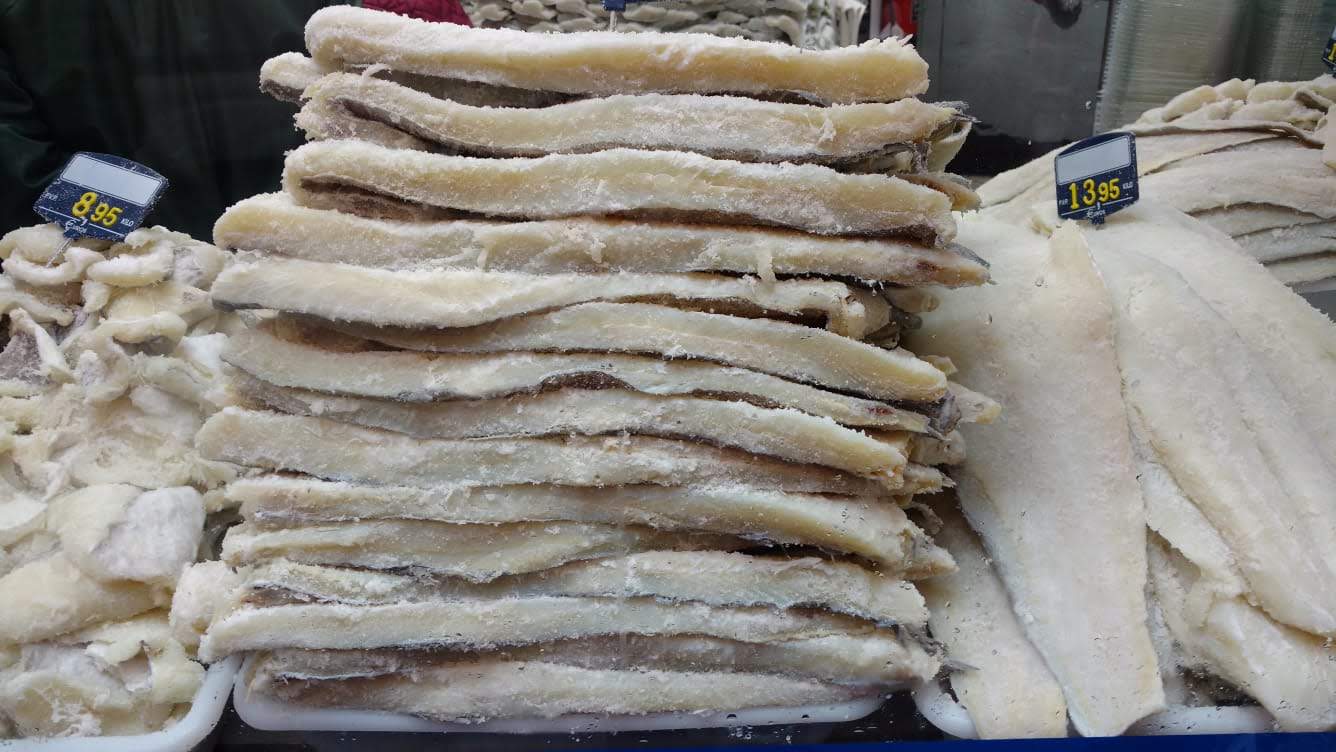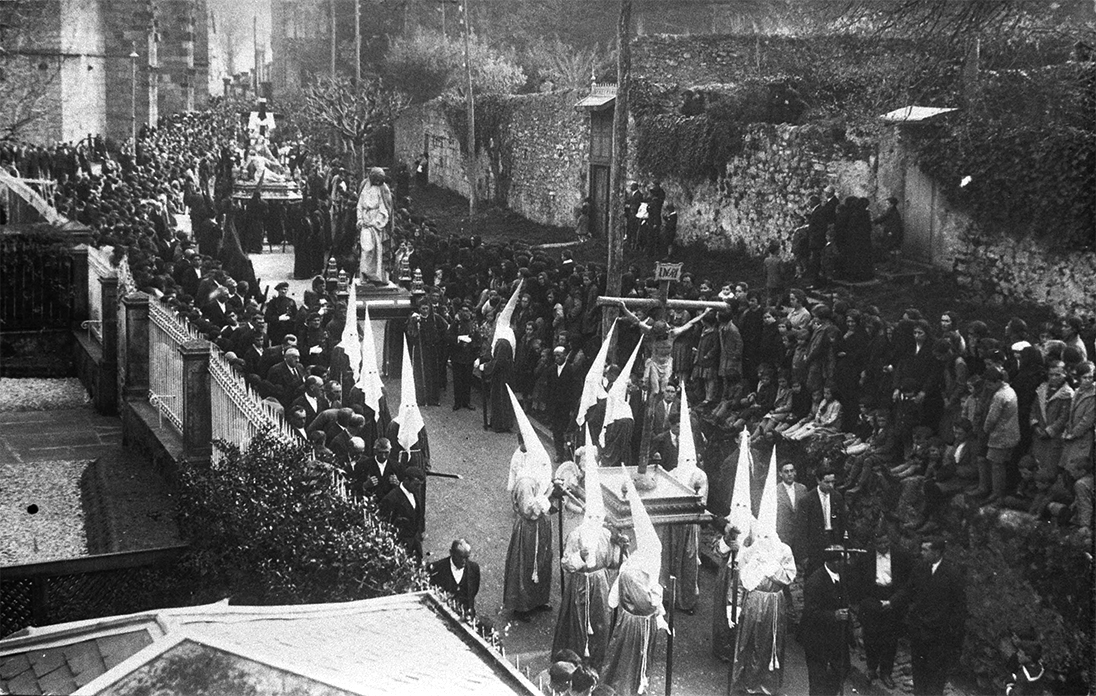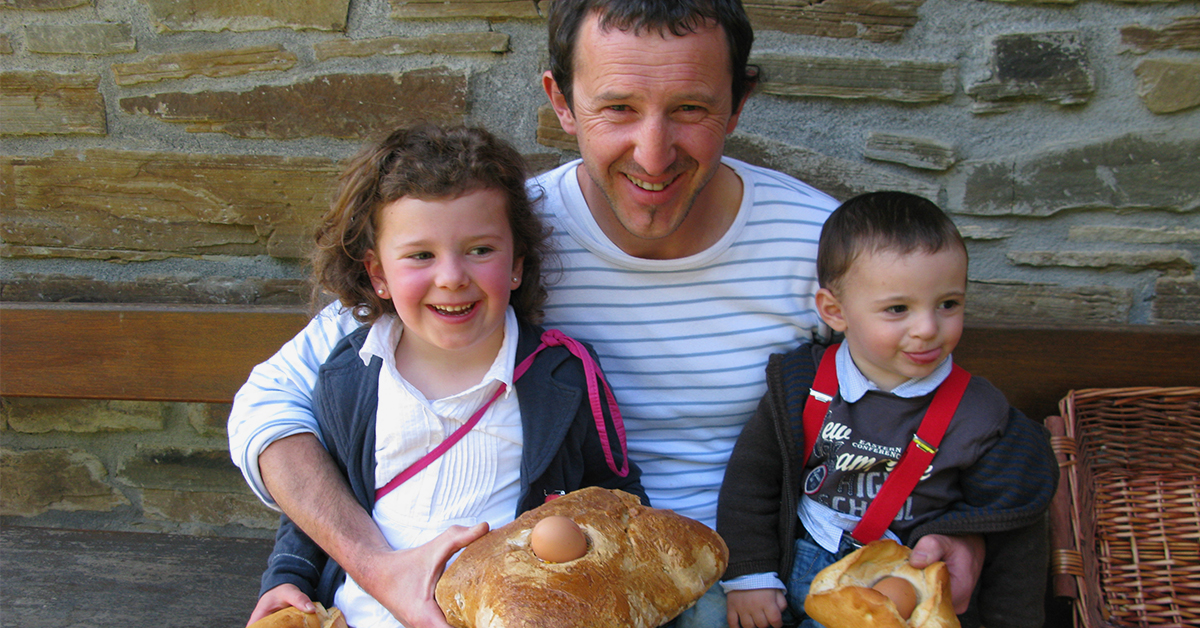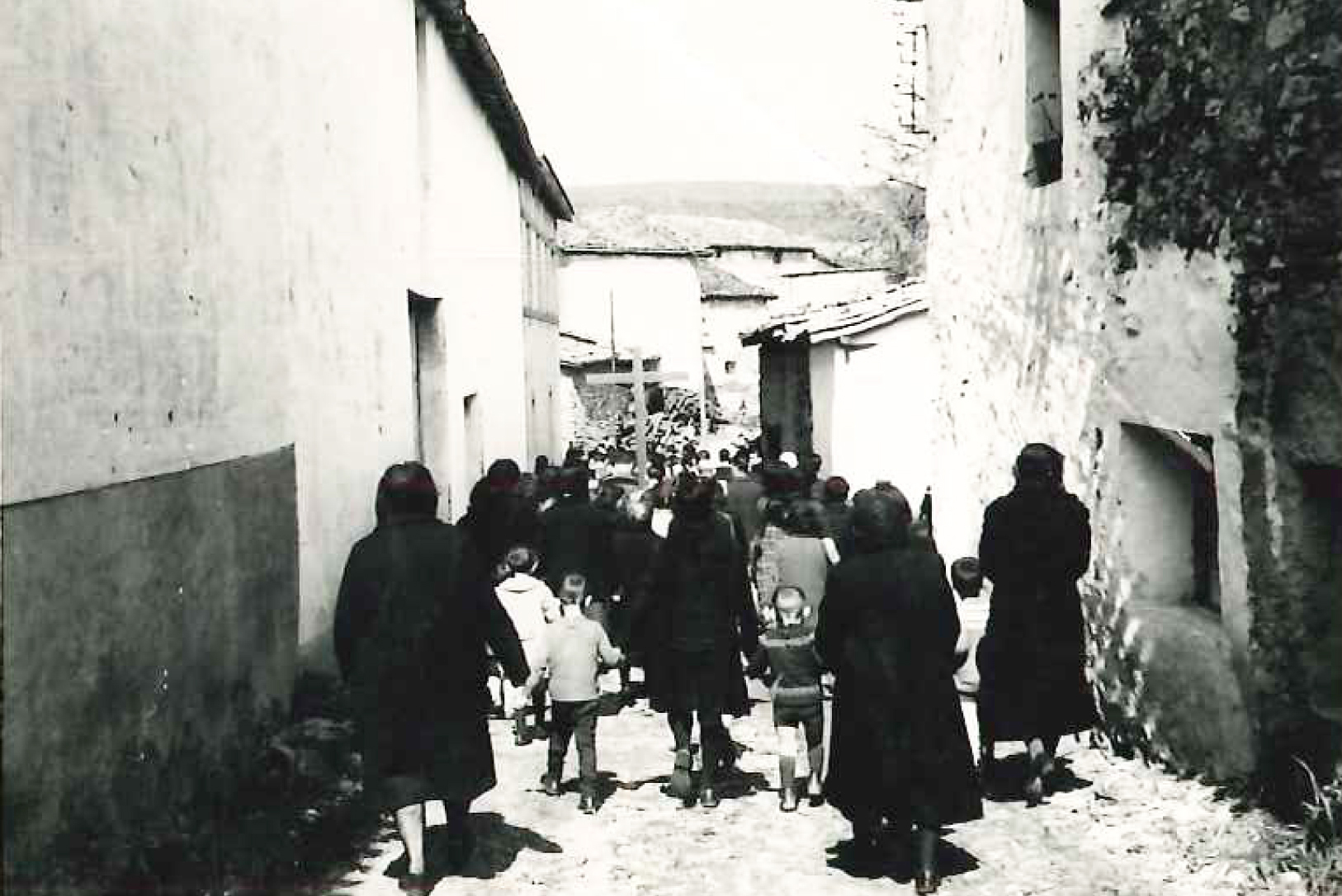Archives
Lent, Holy Week and Easter follow on from Carnival. Lent recalls the forty days of prayer and penitence that Jesus spent in the desert. The forty days from Ash Wednesday – on 22 February this year – until Maundy Thursday are traditionally spent fasting and praying. This period ends with Holy Week, which is from Palm Sunday – on 2 April this year – to Easter Sunday; it is the time spent commemorating the Passion of Jesus Christ and builds up to Easter Sunday that celebrates his Resurrection.
During the Easter Vigil on the night from Easter Saturday into Easter Sunday, the Paschal candle is lit and represents Jesus resurrected, and indicates that Christ has come back from death. Alongside the religious services on following day – Easter Sunday and on 9 April this year –, the custom of godparents giving their godchildren a roll with one or several eggs baked into the bread still survives in some places of Euskal Herria and was very widespread in the past. The roll can be circular or triangular and is known as mokotsa in Amorebieta-Etxano and Gorozika, morrokotea and/or mokotsa in Arratia, olatea in Orozko, pazkopile in Busturia, arrautz-opila in Zerain, kaapaxue in Elosu-Bergara, and aitatxi-opil or amatxi-opil in Baztan…
(more…)

Salt fish for sale. Joseba Erkoreka. Labayru Fundazioa Photographic Archive.
My mother was a good hand at cooking salt fish, makailaoa, in Bizkaia Basque. Or practice might make perfect. The fact is that we used to eat salt fish regularly, and it would be she who bought, desalted and cooked it.
The Vikings are said to be the first to preserve cod by drying and in their travels brought it with them. Over the centuries the harvest, processing and commercialization of cod became a lucrative business. The Basque fleet fished for cod twice a year in waters off Newfoundland, some reaching as far as Greenland and North America. Hundreds of tons of cod were caught, beheaded, gutted and salted onboard. Fish processing continued ashore, upon return, in the codfish-drying plants. (more…)

Holy Week of 1929 in Gernika-Lumo (Bizkaia). Archive of the Gernikazarra History Group.
Both solemn religious observances in the Christian liturgical calendar, Lent precedes and prepares for Easter, a moveable feast celebrated on the first Sunday after the first full moon following the northern spring equinox.
The Lenten season begins on Ash Wednesday, immediately after Carnival, and commemorates the forty days of retreat and fasting which Jesus spent in the desert previous to his earthly ministry. Churchgoers, albeit far fewer than before, take advantage of this time to participate in spiritual practices at parish churches or spiritual centres. (more…)
Lent was marked by fasting, both from foods and festivities. Abstention from dancing was a true torment to the lasses, whose only enjoyment consisted in a Sunday stroll or a game of cards.
In small villages young women took a walk on the road, weather permitting. If rain was expected, they gathered at a house to play cards and have some hot chocolate or hormigos, a kind of cornmeal porridge. At the sound of the evening bells, they headed for their homes. Ever ready for a prank, the lads tried to distract the girls and steal their hot chocolate. To this end, they would, for instance, place some pepper on a burning brazier or climb to the window and get the girls’ pot from the sill. Let us remember that, as there were no refrigerators or chillers at the time, stews and desserts were left to cool on the sill. (more…)




